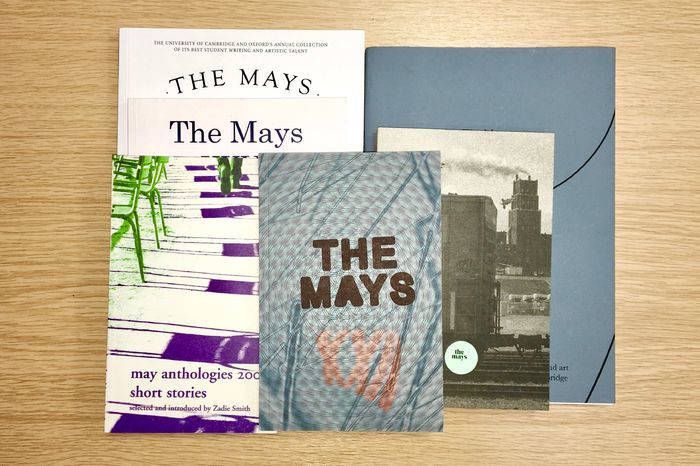Poetry in the Age of Twitter
We must be more open to new poetic forms if we are to understand poetry’s real-life impact on individuals, argues Sasha Swift
Since its origins, poetry has often been seen as a vessel for the romantic musings of the languishing bard, with a reputation for being dismal, difficult to access and often reserved for the pretentious. And yet, a recent resurgence in popular interest can be found in the rise of “twipoetry”, or “micropoetry” as it is otherwise known. Both of these sub-genres describe a new type of poetry – gaining traction around 2014 – in which authors compose and tweet poems within the 140-character restriction of Twitter. While this genre of “micropoetry” is perpetuated by many British authors such as Alison Brackenbury and Cambridge’s own alumnus George the Poet, many individuals have also taken to more casual forays into poetry, with everyday occurrences and explorations of emotion becoming prevalent subject choices
Instagram and Twitter are platforms where the mundane becomes relatable and the pressure to create and maintain persona is a novel concept permeating most people’s lives.
Though the movement originated on Twitter, this type of minimalistic and abstract poetry, characterized by short staccato lines and evocative mise en page, has migrated to the printed word, no longer bound to the confines of the Internet. One of the most apposite examples of this is Rupi Kaur’s New York Times Best Seller, milk and honey, which sold over 1.5 million copies in its first year of publication and is a testament to the success of social media platforms as the catalyst for a renaissance of the youthful poetic spirit. While Kaur did not begin composing milk and honey on Twitter, its veneration can certainly be attributed to the popularity of her work on Instagram.
Kaur’s debut collection helped revive the commercial popularity of modern poetry, yet it is often harshly criticised by orthodox critics. With its pointed use of word placement and abstract sketches accompanied by simple language, Kaur’s text conveys a contemporary aesthetic while undercutting the inaccessibility of the often sepulchral literary canon. While the text’s rapturous success cannot be denied, critics question its longevity, suggesting this is simply a social-media-perpetuated inconsistency. Anomaly or not, can this resurgence be surprising? Apps such as Instagram and Twitter are platforms where the mundane becomes relatable and the pressure to create and maintain a persona is a novel concept permeating most people’s lives.
As Alison Brackenbury explains, “I post lines from my breakfast reading… Writing in 140 characters has taught me to slash sentences; it offers a public home for private passions, such as bicycles and bumblebees.” This has ensured that very little is now deemed as “too personal” to share, and expressing your innermost emotions online has been normalised, coinciding not only with the rise of online friendships but also the destigmatisation of mental health discussion. Therefore, it is entirely expected that a medium of self expression such as poetry – perceived as the “ascended” prose in which the trials and tribulations of troubled individuals have eternally laid their claims – is experiencing a resurgence.
The broadening of the spectrum of what is considered poetry can only be beneficial to a new generation of emerging artists
Poetry has been incessantly, historically (and understandably) romanticised. Perhaps the recent metamorphosis of micropoetry is allowing a stark, raw and less calculated poetic approach, reminiscent of the Imagists’ work, to reemerge. The concept of abstract, minimalist poetry is not a new one; in 1965, poet Aram Saroyan typed the 7-letter word “lighght”, provoking deep controversy while also gaining genuine traction after being included in The Chicago Review and The American Literary Anthology. When published, this poem received backlash due to the cultural landscape it materialized into. Saroyan’s “lighght” was published during a time of deep social distortion: 500 Americans a week were dying in the Vietnam War and JFK had recently been assassinated. The minimal brouhaha “lighght” caused in the literary community seems entirely justified considering the circumstances, while the current resurgence of abstract “micropoetry” seems to exist in conjunction rather than disjunction with the shifting literary canon of the 21st century.
The broadening of the spectrum of what is considered poetry can only be beneficial to a new generation of emerging artists. Marking poetry off from the social media platforms on which we now so heavily rely to cultivate our aesthetics and personal individualities seems entirely nonsensical, and would only further alienate a discontented generation. The value of poetry as a subjective artform cannot be decided by public opinion – a haiku under 140 characters may resonate more with an individual than a carefully cultivated sonnet. While the popularity of “micropoetry” is revelatory, the eternal nature of classical poetry in the literary canon also must be highlighted.
Traditionally-venerated poetry was created with great discipline and commitment to form, and often the greatest sense of unbridled pleasure can be found in accessing a difficult poem and the profound personal significance this can create. Attempting to judge the value of two denominations of the same art form is misguided; in order to understand poetry’s longevity and cultural significance, we must look at the way in which it interacts with the temporal frame within which it exists and its individuals, rather than trying to discern its value.
 Features / How sweet is the en-suite deal?13 January 2026
Features / How sweet is the en-suite deal?13 January 2026 Comment / Will the town and gown divide ever truly be resolved?12 January 2026
Comment / Will the town and gown divide ever truly be resolved?12 January 2026 News / 20 vet organisations sign letter backing Cam vet course13 January 2026
News / 20 vet organisations sign letter backing Cam vet course13 January 2026 Arts / Fact-checking R.F. Kuang’s Katabasis13 January 2026
Arts / Fact-checking R.F. Kuang’s Katabasis13 January 2026 Music / Inside Radiohead’s circle13 January 2026
Music / Inside Radiohead’s circle13 January 2026










